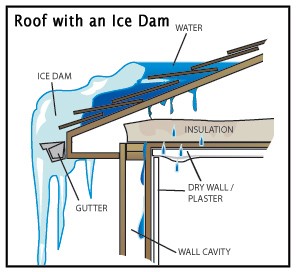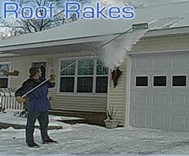Get that Snow off Your Roof!
The winter season means we need to be aware of ice dams. So what exactly is an ice dam? An ice dam occurs when snow accumulates on a roof and a cycle of melting and refreezing occurs. Two factors, besides snow, significantly contribute to the formation of ice dams: the outside air temperature and the temperature of the inside of your attic.
Warm attics will promote melting of snow on the roof. Under normal circumstances the resulting water would simply flow off the edge of the roof. But when outside air temperatures are very cold, the edge of the roof stays below freezing causing the water to refreeze at the edge. The ice forms a line or “dam” at the edge of the roof. As more snow continues to melt, it continues to re-freeze when it reaches the “ice dam” causing the dam to get bigger.
Water damage occurs when the dam gets so large that the melted snow that pools up behind the dam forces its way back under the roof shingles, ultimately leaking into your home. A good ice shield barrier will help prevent water intrusion, however, some dams will form higher on a roof. This will allow water to get past the ice shield. Nail penetrations in the ice shield can also allow water to enter a well-shielded roof. Gutters do not cause ice dams, but ice dams can extend to the gutters. We have all seen pretty icicles forming on roof lines. This is not something you want to see on your home!
How can ice dams be prevented?
Keeping snow off the roof is probably the most effective solution, however, this is not always easy, practical or convenient.


